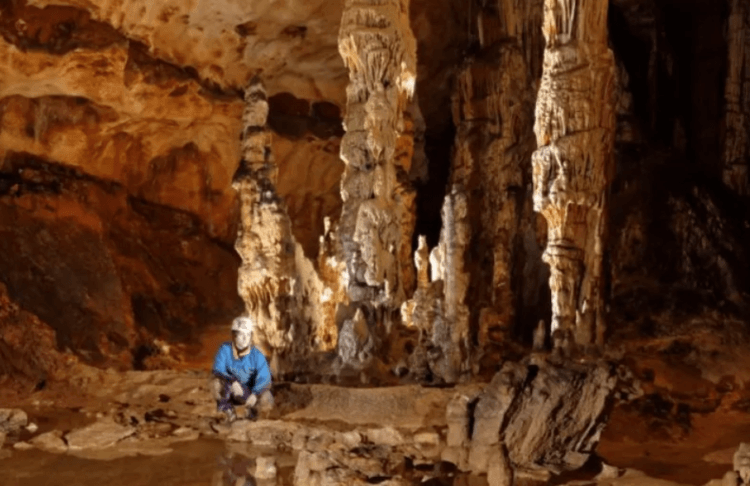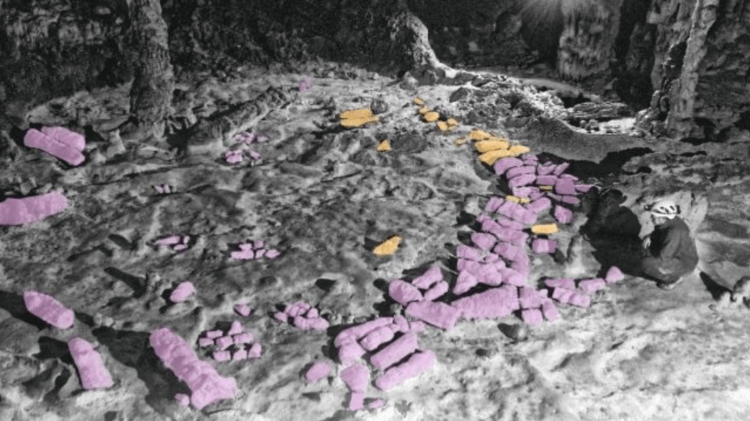The earth's crust is literally riddled with caves – deep cavities, often beautiful and at the same time very dangerous, such as the Cave of Crystals, which we talked about not so long ago. One of the most famous cave networks in the world is the Saint-Marcel Cave in France. Its immediate zone, that is, the part located at the entrance, has been inhabited by people for many thousands of years. Therefore, the cave has attracted the attention of anthropologists from all over the world for many years. However, most of it, the length of which is more than 60 kilometers, was of little interest to scientists, since it is difficult to access. It is difficult to get into it even with special modern equipment. But imagine the surprise of the researchers when they discovered that 8,000 years ago people had already visited these inaccessible places, where they left their traces.

Scientists have discovered that people visited a dangerous impenetrable cave 8,000 years ago
Ancient people penetrated deep into caves
Scientists have discovered traces of people at a distance of more than one and a half kilometers from the entrance to the cave. This is very strange, since the path to this place is extremely dangerous, for example, it contains deep holes. Even by modern standards, taking into account the availability of equipment and special equipment, as well as powerful lighting, pits are considered very dangerous.
This raises the question – how were ancient people able to penetrate to the discovered place and return back if they had none of this? There is no answer yet, but the discovery suggests that ancient people had the ability to somehow explore cave systems and overcome large, deep shafts.

The cave of Saint-Marcel, where people have lived for thousands of years. Image source: springer.com
The secret of the Saint-Marcel cave
Scientists have known about the part of the cave in question for a long time. Scientists found a lot of broken sediment on the floor – stalactites (hanging down formations on the ceiling of the cave) and stalagmites (deposits formed on the floor that grew upward).
In the article about the Cave of Crystals, we talked about how these deposits were formed by underground water, essentially mineral solutions that filled the caves and then retreated.
Broken stalactites and stalagmites are found in many caves around the world. This is mainly due to the fact that in the 19th century it was popular among speleologists and tourists to break off pieces of such sediments as souvenirs. They also left traces in the cave in memory of their visit. Therefore, it was initially assumed that the broken sediments in the Saint-Marcel cave were associated with such tourists.

Map of the Saint-Marcel cave, indicating the area, where broken deposits were found. Photo source: Scince Alert
However, over time, scientists began to find traces of prehistoric people in other caves. As a result, researchers began to suspect that the Saint-Marseille cave was not visited by visitors in the 19th century, but also by ancient people. Fortunately, in the case of sediments, it is not difficult to determine when they were broken.
Who broke the stalagmites in an impenetrable cave
Stalagmites are formed as a result of prolonged contact with water. If, for example, it is broken, but water continues to flow, then after some time it will grow again. Therefore, the researchers studied the processes at the fracture site. In addition, they used uranium-thorium dating. Uranium dissolves in water and then settles with other minerals. The product of its decay is thorium. Accordingly, the presence of thorium indicates the decay of uranium after the deposition of the mineral.
The rate of decay of uranium is known and fixed, due to which the age of deposits can be determined by the amount of thorium. Based on these methods, scientists have found that stalagmites were formed between 125 thousand and 70 thousand years ago.

Structure made of broken stalagmites
The team also found that the stalagmites were broken between 10 thousand and 3 thousand years ago. Moreover, a large number of fragments were most likely deliberately laid out on the floor. The age of this structure is approximately 8000 years. Researchers report this in the Journal of Archaeological Method and Theory.
Don't forget to subscribe to our Zen and Telegram channels so you don't miss the most interesting and incredible scientific discoveries!
According to scientists, there is no longer any doubt that the cave was visited by ancient people thousands of years ago. But how they did this is the subject of future research. In any case, the discovery forces us to take a different look at ancient societies and their use of caves. In addition, it gives the cave of Saint-Marcel even greater cultural significance associated with the prehistoric past.